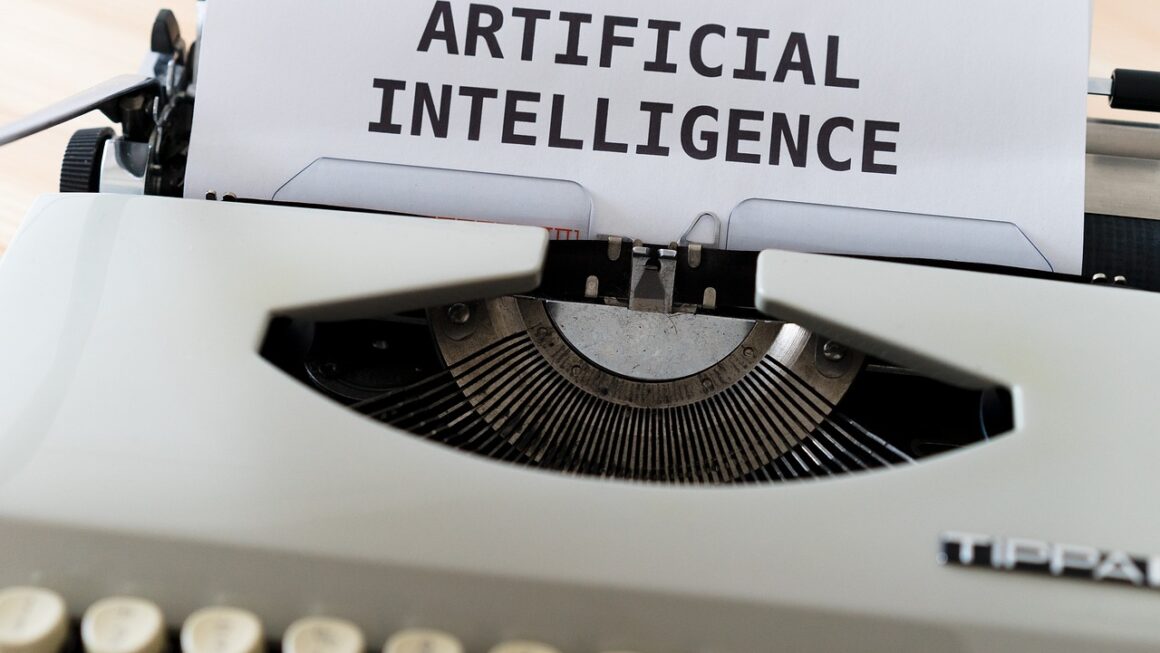Artificial intelligence (AI) is rapidly transforming industries and reshaping our world. From self-driving cars to medical diagnoses, AI’s potential is immense. However, this transformative power comes with significant risks. Without proper oversight and responsible development, AI could exacerbate existing inequalities, infringe on privacy, and even pose existential threats. This is where AI governance comes in, providing a framework for ensuring AI is developed and deployed ethically, safely, and for the benefit of humanity. This blog post explores the critical aspects of AI governance, providing insights into its challenges, frameworks, and best practices.
What is AI Governance?
AI governance encompasses the policies, regulations, and frameworks that guide the development and deployment of AI systems. It aims to maximize the benefits of AI while mitigating its potential harms. It’s a multi-faceted field involving legal, ethical, technical, and societal considerations. Essentially, it asks and answers the questions: “How do we ensure AI is used responsibly?” and “How do we prevent AI from causing harm?”.
Key Objectives of AI Governance
AI governance aims to achieve several key objectives:
- Ensuring Safety: Preventing AI systems from causing physical or economic harm. This includes addressing potential risks in areas like autonomous vehicles and robotics. For example, rigorous testing and validation procedures are crucial for self-driving cars to ensure they can safely navigate real-world conditions.
- Promoting Fairness and Equity: Preventing AI systems from perpetuating or amplifying biases and discrimination. This requires careful attention to data used to train AI models and ongoing monitoring to detect and mitigate bias.
- Protecting Privacy: Ensuring that AI systems respect individuals’ privacy rights and comply with data protection regulations. This includes implementing data anonymization techniques and providing individuals with control over their personal data.
- Ensuring Transparency and Explainability: Making AI systems understandable and accountable. This involves providing explanations for AI decisions and enabling stakeholders to understand how AI systems work. This is particularly important in high-stakes applications like loan applications or criminal justice.
- Fostering Innovation and Economic Growth: Creating an environment that encourages responsible AI innovation and promotes economic growth while safeguarding societal values. This requires balancing regulatory oversight with the need to foster innovation.
The Scope of AI Governance
AI governance is not limited to governments and regulators. It extends to various stakeholders, including:
- AI Developers: Responsible for developing and deploying AI systems ethically and safely. They need to implement best practices in data handling, model development, and testing.
- Organizations: Implementing AI systems in their operations. They need to develop internal policies and procedures for responsible AI use. For example, a bank using AI for loan applications should have clear guidelines to prevent discriminatory lending practices.
- Researchers: Conducting research on the ethical and societal implications of AI. They need to identify potential risks and develop solutions to mitigate them.
- Policymakers: Developing regulations and standards for AI development and deployment. They need to create a framework that promotes responsible AI innovation while protecting societal values.
- The Public: Informed about the potential impacts of AI and empowered to participate in discussions about its governance. Public awareness campaigns and educational initiatives are crucial for fostering informed public discourse.
Challenges in AI Governance
Governing AI presents numerous challenges due to the technology’s complex and rapidly evolving nature.
Technical Challenges
- Bias and Discrimination: AI models can perpetuate and amplify biases present in the data used to train them. Addressing this requires careful data curation, bias detection, and mitigation techniques.
- Lack of Transparency and Explainability: Many AI models, especially deep learning models, are “black boxes,” making it difficult to understand how they arrive at decisions. Developing techniques for explainable AI (XAI) is crucial.
- Security and Robustness: AI systems can be vulnerable to adversarial attacks and other security threats. Ensuring the security and robustness of AI systems is essential to prevent misuse.
- Data Privacy: AI systems often require large amounts of data, raising concerns about data privacy. Implementing privacy-preserving techniques like differential privacy is critical.
Ethical Challenges
- Autonomy and Accountability: Determining who is responsible when an autonomous AI system causes harm. This raises complex legal and ethical questions.
- Job Displacement: The potential for AI to automate jobs and displace workers. Addressing this requires investment in retraining and education programs.
- Impact on Human Values: AI systems can impact human values like autonomy, dignity, and freedom. Ensuring that AI systems align with these values is crucial.
Legal and Regulatory Challenges
- Lack of Clear Legal Frameworks: Existing legal frameworks may not be adequate to address the unique challenges posed by AI. Developing new laws and regulations specific to AI is necessary.
- International Harmonization: The need for international cooperation and harmonization of AI regulations. Different countries may have different approaches, creating challenges for companies operating globally.
- Enforcement: Ensuring that AI regulations are effectively enforced. This requires investment in regulatory capacity and expertise.
AI Governance Frameworks and Standards
Various frameworks and standards are being developed to guide AI governance. These provide organizations with a structured approach to responsible AI development and deployment.
Governmental Initiatives
- EU AI Act: A comprehensive regulatory framework for AI in the European Union, focusing on high-risk AI systems. It categorizes AI systems based on risk and imposes specific requirements for each category.
- NIST AI Risk Management Framework (RMF): A voluntary framework from the National Institute of Standards and Technology in the US, providing guidance on identifying, assessing, and managing AI risks. It emphasizes a holistic approach to risk management.
- OECD AI Principles: A set of principles adopted by the Organization for Economic Co-operation and Development (OECD) to promote responsible AI development and deployment. These principles cover areas like human values, fairness, and transparency.
Industry Standards
- ISO/IEC 42001: An international standard for AI management systems, providing a framework for organizations to manage AI risks and ensure responsible AI development and deployment. It’s based on the Plan-Do-Check-Act (PDCA) cycle.
- IEEE Standards: The Institute of Electrical and Electronics Engineers (IEEE) has developed numerous standards related to AI ethics and governance, covering topics like transparency, accountability, and bias mitigation.
- AI Ethics Guidelines: Many organizations have developed their own AI ethics guidelines to guide their internal AI development and deployment practices. Examples include Google’s AI Principles and Microsoft’s Responsible AI Standard.
Practical Implementation Tips
- Conduct AI Ethics Assessments: Before deploying an AI system, conduct a thorough ethics assessment to identify potential risks and develop mitigation strategies.
- Establish AI Governance Policies: Develop clear AI governance policies that define roles, responsibilities, and procedures for responsible AI development and deployment.
- Provide AI Ethics Training: Train employees on AI ethics and governance principles to ensure they understand their responsibilities.
- Monitor and Audit AI Systems: Regularly monitor and audit AI systems to detect and address potential biases and other issues.
- Engage with Stakeholders: Engage with stakeholders, including users, experts, and the public, to gather feedback and ensure that AI systems are aligned with their values and expectations.
The Role of Ethics in AI Governance
Ethics plays a central role in AI governance. Ethical considerations should guide every stage of the AI lifecycle, from data collection to deployment and monitoring.
Core Ethical Principles
- Beneficence: AI systems should be designed to benefit humanity and promote well-being.
- Non-Maleficence: AI systems should not cause harm or create undue risks.
- Autonomy: AI systems should respect individuals’ autonomy and freedom of choice.
- Justice: AI systems should be fair and equitable, avoiding discrimination and bias.
- Transparency: AI systems should be understandable and explainable, allowing stakeholders to understand how they work and make decisions.
- Accountability: AI systems should be accountable, with clear lines of responsibility for their actions.
Implementing Ethical Principles
- Ethics-by-Design: Integrate ethical considerations into the design and development process of AI systems from the outset.
- Ethical Review Boards: Establish ethical review boards to oversee AI development and deployment and ensure that ethical principles are being followed.
- Stakeholder Engagement: Engage with stakeholders, including users, experts, and the public, to gather feedback and ensure that AI systems align with their values and expectations.
- Continuous Monitoring: Continuously monitor AI systems to detect and address potential ethical issues.
- Ethical AI Audits: Conduct regular ethical AI audits to assess the ethical performance of AI systems and identify areas for improvement.
Example of Ethical Dilemma
Consider an AI system used for hiring decisions. While designed to streamline the process and reduce human bias, the system is trained on historical data reflecting past biases (e.g., gender imbalances in certain roles). The system then inadvertently perpetuates these biases, favoring male candidates over equally qualified female candidates. This scenario highlights the importance of careful data curation, bias detection, and ongoing monitoring to ensure that AI systems are fair and equitable. An AI governance framework should mandate audits for bias to avoid this unethical outcome.
The Future of AI Governance
The field of AI governance is rapidly evolving, and its future will be shaped by several factors.
Key Trends
- Increased Regulation: Governments around the world are increasingly developing regulations for AI, reflecting growing concerns about its potential risks. The EU AI Act is a landmark example of this trend.
- Standardization: The development of international standards for AI governance will promote consistency and interoperability across different jurisdictions. ISO/IEC 42001 is a significant step in this direction.
- AI Explainability and Transparency: Continued progress in developing techniques for explainable AI (XAI) will make AI systems more understandable and accountable.
- Focus on AI Safety: Growing emphasis on AI safety research to address potential catastrophic risks associated with advanced AI systems.
- Collaboration and Knowledge Sharing: Increased collaboration and knowledge sharing among governments, industry, researchers, and the public will be essential for effective AI governance.
Predictions and Recommendations
- Stronger Regulatory Frameworks: We can expect to see stronger and more comprehensive regulatory frameworks for AI in the coming years, addressing issues like bias, privacy, and security.
- Emphasis on AI Literacy: Increasing efforts to promote AI literacy among the public to enable informed participation in discussions about AI governance.
- Development of AI Ethics Certifications: The emergence of AI ethics certifications for AI professionals and organizations to demonstrate their commitment to responsible AI development and deployment.
- Greater International Cooperation: Increased international cooperation to address global challenges related to AI governance, such as data privacy and security.
- Proactive Risk Management: Organizations should adopt a proactive approach to AI risk management, identifying and mitigating potential risks before they materialize.
Conclusion
AI governance is a critical field that will shape the future of AI. By establishing clear policies, regulations, and frameworks, we can harness the immense potential of AI while mitigating its potential risks. Organizations and individuals have a responsibility to promote responsible AI development and deployment, ensuring that AI benefits humanity and aligns with our values. Continuous learning, adaptation, and collaboration are essential to navigate the evolving landscape of AI governance and build a future where AI is used for good.




